Vice has always been a draw. Artists visiting Baroque Rome enjoyed drinking and brawling as much as the splendours of the Eternal City. Today visitors are lured to the Petit Palais’ new exhibition, ‘The Baroque Underworld: Vice and Destitution in Rome’, by the promise of a taste of this gritty milieu. The success of the exhibition has even provoked security concerns for the works on display. Le Figaro reported on 10 March that there were over 21,000 visitors in the first two weeks of the show’s opening.
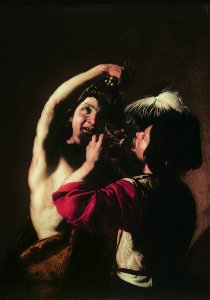
Bacchus and a drinker (c. 1621), Bartolomeo Manfredi © Soprintendenza Speciale per il Patrimonio Storico, Artistico ed Etnoantropologico e per il Pollo Museale della città di Roma
Bacchus, the Roman god of wine, creative inspiration and good times, appears early on in the show and embodies dissolute indulgence. Bartolomeo Manfredi’s Bacchus and a Drinker depicts Bacchus almost in an embrace with a man lifting a glass of wine to his lips. The man appears to take little pleasure in the drink and Bacchus looks like a roguish drunken contemporary of the unfortunate drinker rather than a mythical god.
Bacchus was also celebrated by a group of Dutch and Flemish artists in 17th-century Rome known as the Bentvueghels (‘birds of a feather’). The third room includes drawn portraits of the Bentvueghels and paintings of their raucous initiation rituals. The Bentvueghels in a Roman Tavern by Roeland van Laer, for example, depicts a tableau vivant amongst much drunkenness – an olden day Riot Club.
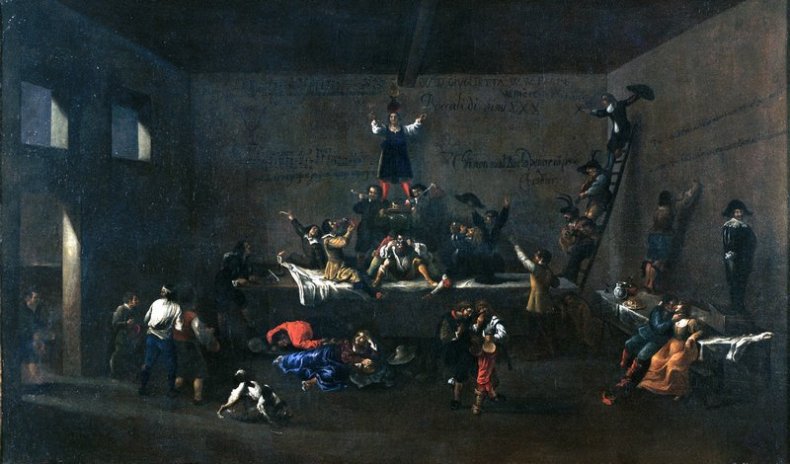
Bentvueghels in a Roman Tavern (1626–68), Roeland van Laer © Roma Capitale – Sovrintendenza Capitolina ai Beni Culturali – Museo di Roma
The show continues, exploring witchcraft, gambling, fighting, begging and banditry. In many works, the tavern is the epicentre: The Brawl by Theodoor Rombouts, The Cheats by Pietro Paolini, Meeting of Drinkers by Bartolomeo Manfredi. These starkly-lit scenes with shadowy backdrops owe much to Caravaggio, who does not appear in the show but whose influence is felt throughout (Manfredi’s Bacchus and a Drinker was previously attributed to Caravaggio).
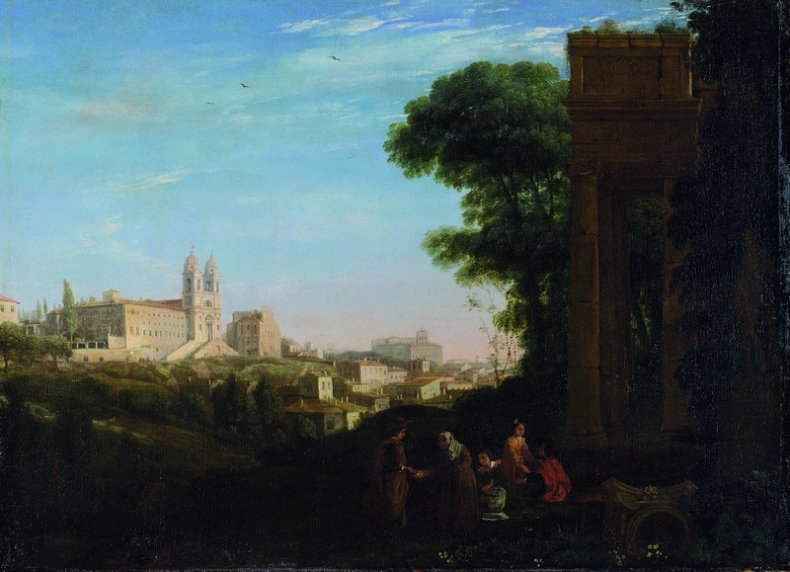
View of Rome with a scene of prostitution (1632), Claude Gellée, called Lorrain © The National Gallery, London.
Other artists take a wide-angle view of Rome’s vices in line with their own artistic concerns. Claude Lorrain depicts a picturesque landscape of the city, tainted by a corrupt scene in the foreground in View of Rome with a Scene of Prostitution. Similarly, mendicants and bandits litter views of the glorious city and its surrounding landscapes.
The scenography of the exhibition, designed by Italian set designer Pier Luigi Pizzi, takes the visitor through a light bright hall with engravings and casts of classical sculptures. The exhibition continues with paintings hung in darker rooms, highlighting the contrast between the splendid Rome of riches and religion and the seedy underworld, the flip side of the beau ideal.
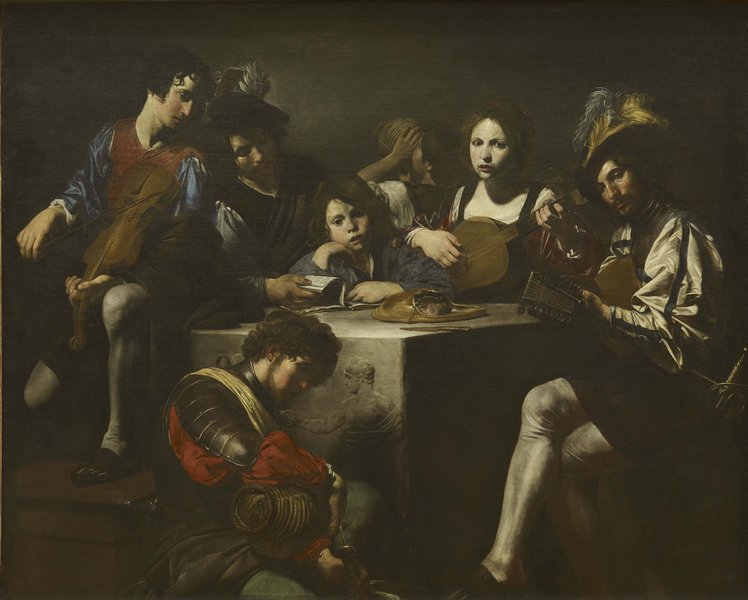
Concert with a bas-relief (c. 1620–25), Valentin de Boulogne © Musée du Louvre, Dist. RMN-Grand Palais / Martine Beck-Coppola
In the final section of the exhibition, paintings are exhibited against a sumptuous red backdrop in a richly decorated space to evoke the Roman palaces which were soon to house such paintings. The title of this section: ‘The Melancholy Tavern: Meditations of Pleasure’, and the choice of paintings, including Valentin de Boulogne’s Concert with a bas-relief, seek to evoke the inherent ambiguities of debauched pleasure. The paintings depict the reality of many of the artists’ Roman holiday but also present a moral lesson to the spectator. Whatever the case, then as now the themes of iniquity and corruption were very popular with the punters.
‘The Baroque Underworld: Vice and Destitution in Rome’ is at the Petit Palais, Paris, until 24 May.
Unlimited access from just $16 every 3 months
Subscribe to get unlimited and exclusive access to the top art stories, interviews and exhibition reviews.

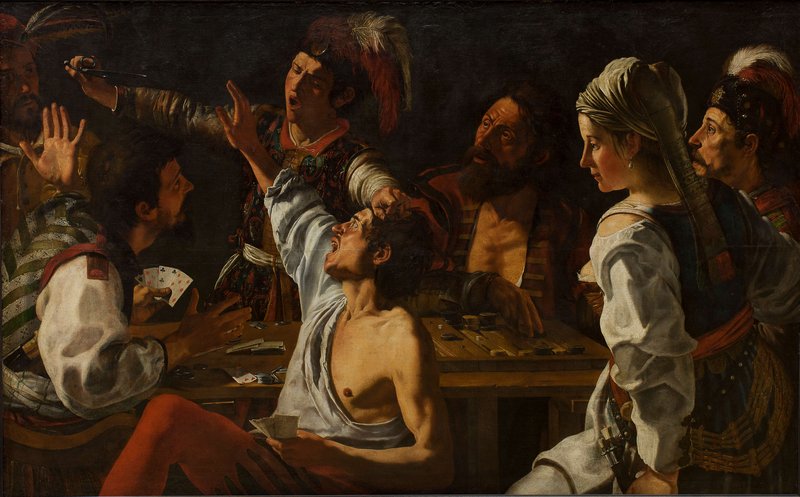
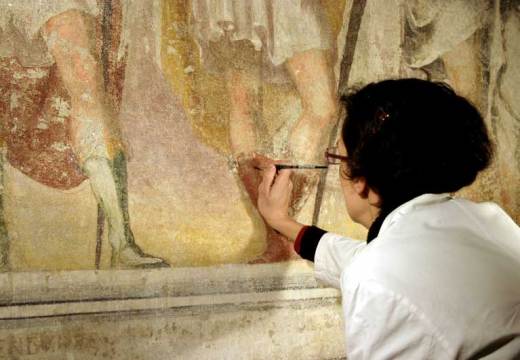
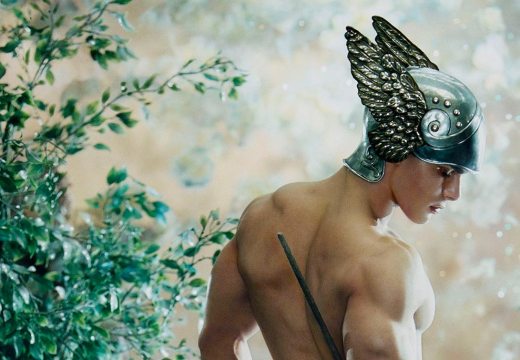
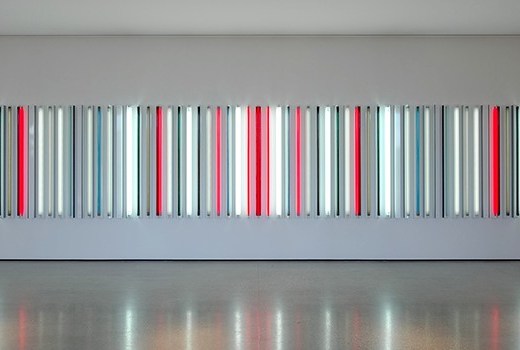









![Masterpiece [Re]discovery 2022. Photo: Ben Fisher Photography, courtesy of Masterpiece London](http://www.apollo-magazine.com/wp-content/uploads/2022/07/MPL2022_4263.jpg)
Why are fathers so absent from art history?